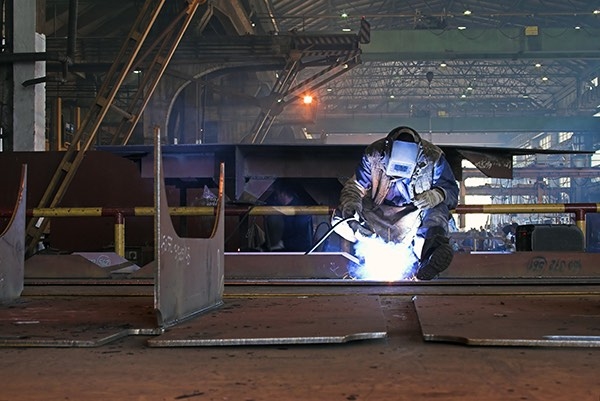Fitting Exhaust Gas Scrubbers In Time For 2020 – Has That Ship Sailed?
It's the start of a new year, but the next 12 months are going to move quickly for shipowners who have not yet decided how they are going to meet the International Maritime Organisation’s (IMO’s) 2020 low sulphur deadline. Do they, or do they not, fit exhaust scrubber systems?
Don Gregory, Director of industry group, the Exhaust Gas Cleaning Systems Association (EGCSA), regards the sulphur cap as ‘a train crash in the making.'
Naturally, Gregory supports the view that fitment of marine exhaust scrubbers is the solution to shipowners’ woes, but he has a strong point.
Most industry experts understand that a full installation of a sulphur scrubber for one vessel can take up to a year, longer for a fleet. And lead times are increasing as suppliers and yards come under increasing pressure to satisfy the growing – more like skyrocketing – demand.
Latest numbers from classification society DNV GL indicate that by October 2018 almost 2000 vessels had either been fitted with exhaust scrubbers or had installations confirmed – 40% more than estimated just a month previously.
Scrubber system manufacturers have been anticipating this rush, but can the industry meet the imminent challenge of 2020 SOx compliance?
The IMO tabled these changes to emissions quotas in 2016, so how have we ended up in a position that feels like a rush to the finish line less than 12 months away?

Of course, the IMO itself has had a part to play – for a while its extended investigation into potential fuel availability stimulated uncertainty in the market about whether the new regulations would be enforced in 2020 as planned, or delayed until 2025.
However, some time ago it became clear that fuel supplies would be sufficient and that 1 January 2020 would remain in place as the deadline. So, why did the indecision persist?
Simply put, this is a difficult decision to make. Even though the options available to shipowners are limited (consume expensive low sulphur MGO, use engines that work with liquefied natural gas (LNG), or install an exhaust scrubber and continue using High Sulphur Fuel Oil), the cost implications are significant in every case.
The ‘wait and see' approach that many operators have taken towards deciding how to meet the new sulphur emissions limit has been influenced primarily by fuel economics.
The cost differential between cheaper high sulphur fuel oil (HSFO) and the more expensive 2020-compliant low sulphur fuel oil (LSFO) is critical in determining the attractiveness of installing a sulphur scrubber – the greater the difference, the higher the cost savings and the shorter the payback period.
It is widely believed that the price of HSFO will decline sharply after 2020, while the price of LSFO/MGO will remain high due to increased demand and initially limited availability. The price projections vary significantly, feeding slower decision making as operators wait for more information and clarity.
Some are expecting a price differential of $600 by 2020, but even at a differential of $400, owners opting for a scrubber-fitted vessel in 2020 could recover their cost in the first year alone.
Suppliers of exhaust scrubbers agree that payback within three years is a reasonable expectation. Indeed it'll be much quicker for high-consumption vessels. Of course, nobody knows what the spread will be in a year, but even working with more conservative differential estimates around the $175 mark makes a gas scrubber an attractive proposition.
The dilemma arises when we factor in the cost of investment.
Scrubbers cost between €1m-€5m for the equipment alone, with new-build fitment costing significantly less than retrofitting a scrubber on an existing vessel. For smaller operators and owners with a large number of vessels on their books, this represents a significant capital investment.
Even with low payback periods and a growing number of financing options, the upfront costs are often severe enough to change the strategy for cash-strapped shipowners. Beyond fuel price differentials, investment capital and payback periods, more granular considerations also come into play.
Vessel size and consumption (including increased consumption as a result of adding a scrubber). New build v. retrofitting. Maintenance costs. Scrubber type – closed, open or hybrid – and associated costs, such as sludge disposal. Even compliance issues connected with scrubber operations have cost implications.
The longer owners wait to have scrubbers installed the longer the payback period and the less likely they are to win short-term gains.
To any operator not already committed to exhaust scrubber installation, these arguments might be partially academic. Even with most producers increasing their workforce to meet increasing scrubber demand, there are diminishing chances of having the job completed before the 2020 deadline.
Most industry observers believe it will be impossible to install scrubbers in all eligible vessels by the end of this year and that many shipowners are already planning for installation in 2021. Is this a crisis for owners? Possibly not.
With so much current conjecture around supply levels of LSFO and HSFO after January 1 2020, operators who burn MGO until they get scrubbers retrofitted at a later date will have the benefit of seeing how energy markets respond to the new fuel regulations. Yet such brinkmanship could cost them severely.
The longer owners wait to have scrubbers installed the longer the payback period and the less likely they are to win short-term gains. And short-term is the focus here. For those shipowners in a position to take the necessary steps now, it seems the earlier, the better.
Moreover, if the steep growth curve of scrubber demand is any indication, many operators agree.
Would you like to discuss more?
Our global team of advisors with years of combined experience in the marine sector are on hand to discuss your project.